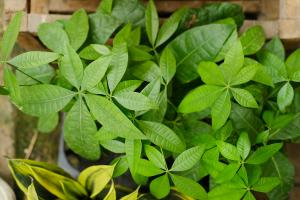What is causing my tomato plants to wilt
Tomato plants are popular among home gardeners because of their delicious fruits and ease of cultivation. However, several factors can cause tomato plants to wilt, leaving gardeners frustrated and puzzled. Understanding the causes of wilt in tomato plants is crucial in preventing or treating the condition. In this article, we explore the possible causes of tomato plant wilt.
Overwatering or Underwatering
Overwatering or underwatering is the most common cause of wilt in tomato plants. Tomato plants require consistent moisture levels to thrive. Too much or too little moisture disrupts the balance, leading to wilting. Overwatering suffocates the roots, preventing them from absorbing oxygen, which leads to root rot. On the other hand, underwatering deprives the plant of water, leading to dehydration, which causes wilting.
Fungal Infections
Fungal infections are a common cause of tomato plant wilt. Fungi such as Fusarium and Verticillium attack the plant's roots, preventing them from taking up adequate water and nutrients, leading to wilting. These fungi live in soil, and they infect the plants through the roots. Infected plants show symptoms such as wilting, yellowing or browning of the leaves, and stunted growth.
Insect Infestations
Insect infestations can also cause tomato plants to wilt. Insects such as aphids, thrips, and whiteflies feed on the plant's sap, leading to wilting. They also transmit diseases such as viruses, which cause wilting. Infected plants show symptoms such as stunted growth, leaf curling, and wilting.
Nutrient Deficiencies
Nutrient deficiencies can also cause tomato plant wilt. Deficiencies in essential nutrients such as nitrogen, potassium, and calcium lead to poor plant growth, reduced yield, and wilting. Nitrogen deficiency results in yellowing of the leaves, stunted growth, and wilting. Potassium deficiency shows symptoms such as browning of leaves, poor fruit quality, and wilting. Calcium deficiency shows symptoms such as blossom end rot and wilting.
Extreme Temperatures
Extreme temperatures can also cause tomato plant wilt. Temperatures above 32 degrees Celsius can cause wilting. High temperatures also cause increased evaporation of water from the plant's leaves, leading to wilting. On the other hand, temperatures below 10 degrees Celsius can also cause wilting. Cold temperatures slow down the plant's metabolic rate, leading to reduced water uptake and wilting.
Conclusion
In conclusion, several factors can cause tomato plant wilt, including overwatering or underwatering, fungal infections, insect infestations, nutrient deficiencies, and extreme temperatures. As a gardener, it is crucial to monitor your plants closely, identify the cause of the problem, and treat it promptly. Proper watering, soil care, and nutrient management can help prevent wilt in tomato plants.

 how many times do yo...
how many times do yo... how many planted tre...
how many planted tre... how many pine trees ...
how many pine trees ... how many pecan trees...
how many pecan trees... how many plants comp...
how many plants comp... how many plants can ...
how many plants can ... how many plants and ...
how many plants and ... how many pepper plan...
how many pepper plan...

































